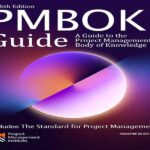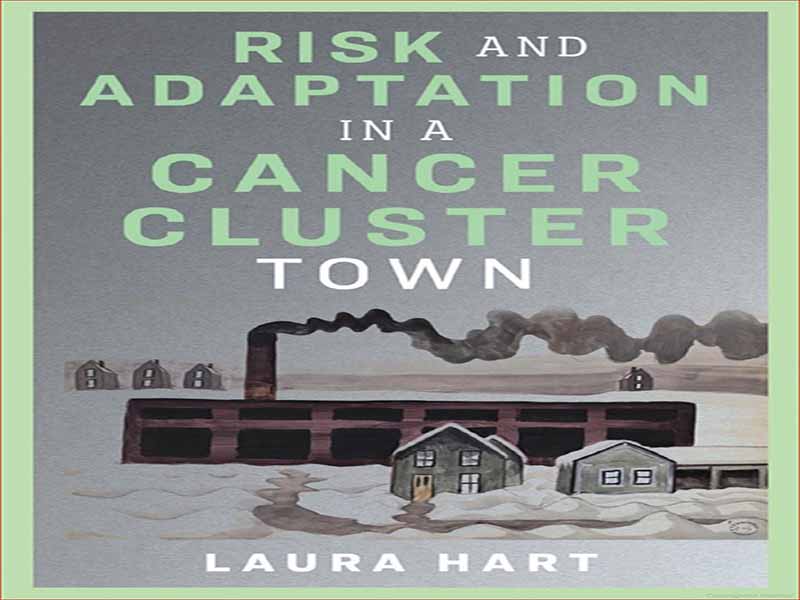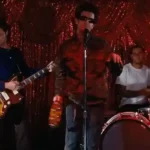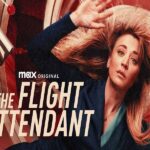- عنوان کتاب: RISK AND ADAPTATION IN A CANCER CLUSTER TOWN
- نویسنده: Salvatore Santamaria
- حوزه: سرطان
- سال انتشار: 2024
- تعداد صفحه: 201
- زبان اصلی: انگلیسی
- نوع فایل: pdf
- حجم فایل: 10.5 مگابایت
واینزبورگ، اوهایو مجموعهای از داستانهای کوتاه از شروود اندرسون است که در سال ۱۹۱۹ منتشر شد. شهر خیالی واینزبورگ بر اساس خاطرات نویسنده از شهر خودش، کلاید، اوهایو است – شهری که تمرکز این کتاب نیز هست. حال و هوای غالب در وینسبرگ، اوهایو، حالتی از سوء تفاهم و تنهایی، بی قراری، نارضایتی و سرخوردگی است. در این شهر خیالی هیچ حس واقعی جامعه وجود ندارد. بیشتر شخصیتهای واینزبورگ در یک لحظه بحرانی به تصویر کشیده میشوند و هیچکس نمیتواند به درک معناداری از شخص دیگر دست یابد. همانطور که توسط روزنامهنگار کریستینا اسمیت در مقاله مجله اوهایو با عنوان “Winesburg, Ohio” در 100 مشاهده شد، جای تعجب نیست که ساکنان کلاید همیشه به تصویر رسوایی اندرسون از شهر افتخار نمی کردند. شهری که هنوز فقدان جامعه را که اندرسون با دقت به تصویر می کشد، تقویت می کند. این فرض توسط ساکنین در تناقض قرار گرفت که با هیجان به من گفتند که کلاید بهترین جامعه برای زندگی است. با این وجود، من یک تعامل بین نیروهای ساختاری و چیزی صمیمیتر را میبینم – انفعالی که توصیف آن با توجه به بحران سلامتی که جامعه با آن مواجه است آسان نیست. ترس از از دست دادن امنیت و ترس از ناشناخته ها – اعم از مادی و اجتماعی – مشخص می شود. در برخی از مظاهر، با فقدان وفاداری مشخص می شود که باعث ایجاد اتحادهای متحرک می شود. در برخی دیگر، به عنوان تنهایی عمیق به نظر می رسد که ارتباط آنها با دیگران به کلی به خطر می افتد. این کتاب تلاشی است، در زمینه پیچیده داده های کیفی، برای نزدیک شدن به درک چگونگی مذاکره در مورد سیاست های زندگی. سالانه حدود 1000 خوشه مشکوک به سرطان به ادارات بهداشت ایالتی گزارش می شود. وقتی از دانشآموزانم در مورد خوشههای بیماری میپرسم، آنها اغلب داستانهایی درباره خوشههای درک شده از بیماری در زادگاهشان یا در نزدیکی آن به اشتراک میگذارند. زادگاه من نیز از این قاعده مستثنی نیست. برادرم تابستان را به یاد می آورد که مزرعه ذرت در کنار خانه ما سمپاشی شد و «تمام محله از گلویشان صحبت می کردند». یکی دیگر از بستگان پدری مبتلا به ام اس دارد که در جاده ای بزرگ شده است که سه نفر دیگر نیز به همین بیماری مبتلا هستند. مادرم که در یک دبیرستان دولتی هنر تدریس می کرد، بیش از یک دانش آموز از همان محله مبتلا به نوع نادر سرطان استخوان بود. پدرم به سرطان مبتلا شد، و زمانی که او در DMZ کره در طول جنگ ویتنام مستقر بود، مشکوک بودیم که این سرطان با قرار گرفتن در معرض عامل نارنجی مرتبط است. سالها بعد، دولت فدرال این ارتباط را تشخیص داد، اما سؤالات من در مورد رابطه بین سموم و بیماری و سازگاری با بیماری بیشتر شد. این تجربیات باور من را تقویت کرد که مسائل پیرامونی مرتبط با بیماری عمیق است. تغییرات اجتماعی، رفتاری، اقتصادی، فرهنگی و محیطی در سلامت و بیماری به اندازه تغییرات زیست پزشکی مهم است.
Winesburg, Ohio is a 1919 collection of short stories by Sherwood Anderson. The fictional town of Winesburg is based on the writer’s memories of his own town, Clyde, Ohio—the town that is also the focus of this book. The prevailing mood in Winesburg, Ohio is one of misunderstanding and loneliness, restlessness, dissatisfaction, and disillusionment. There is no real sense of community in this fictional town; most of the characters in Winesburg are portrayed in a moment of crisis, and no one is able to achieve meaningful understanding of another person. As observed by journalist Kristina Smith’s Ohio Magazine article “ ‘Winesburg, Ohio’ at 100,” it’s not surprising that residents of Clyde were not always proud of Anderson’s scandalous portrayal of the town.1 Early in my fieldwork I wondered if there was something about the town that still fostered the absence of community that Anderson so accurately captures. This assumption was contradicted by resident after resident who ecstatically told me that Clyde was the best community in which to live. Nonetheless, I see an interplay between structural forces and something more intimate—a passivity that is not easy to describe considering the health crisis faced by the community. It is characterized by fear of the loss of security and fear of the unknown—both material and social. In some manifestations, it is characterized by a lack of loyalty that makes for shifty alliances. In others, it appears as loneliness so profound that their connection to others is compromised altogether. This book is an attempt, in the complex field of qualitative data, to edge closer to an understanding of how life politics are negotiated. About 1,000 suspected cancer clusters are annually reported to state health departments. When I ask my students about disease clusters, they often share stories about perceived clusters of illness in or near their hometowns. My hometown is no exception. My brother remembers the summer the cornfield was sprayed next to our house and the “whole neighborhood talking about their throats.” Another relative has a father with MS, who grew up on a road where three other people were diagnosed with the same disease. My mother, who taught art at a public high school, had more than one student from the same neighborhood present with a rare form of bone cancer. My father was diagnosed with cancer, and we suspected that it was linked to Agent Orange exposure when he was stationed in the DMZ in Korea during the Vietnam War. Years later, the federal government would recognize this connection, but my questions about the relationship between toxins and disease and adaptation to illness grew. These experiences reinforced my belief that peripheral issues related to disease are profound. The social, behavioral, economic, cultural, and environmental variations in health and disease are as important as biomedical ones.
این کتاب را میتوانید بصورت رایگان از لینک زیر دانلود نمایید.




































نظرات کاربران